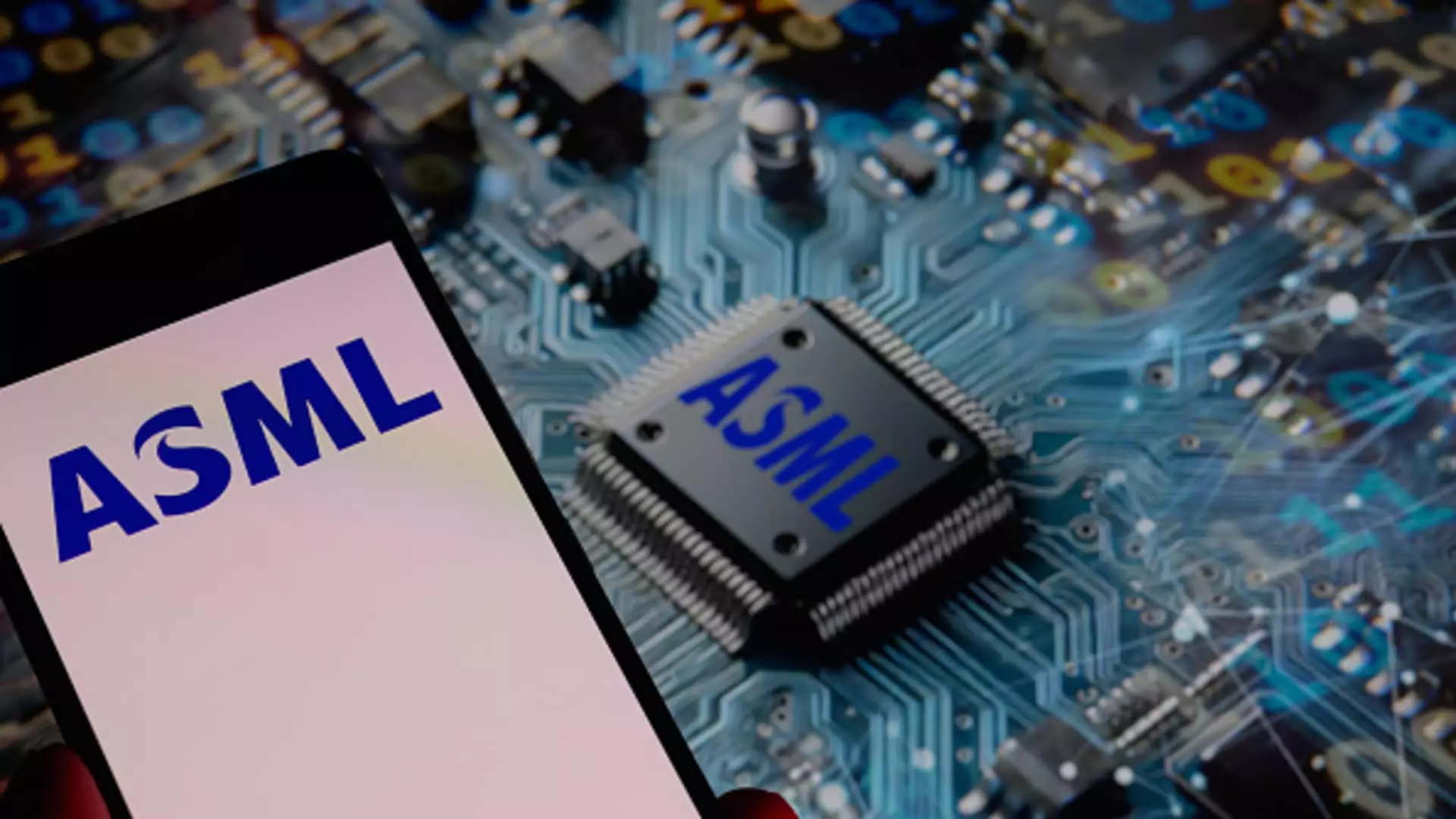Just a year ago, ASML was riding high, basking in the glory of a market capitalization that peaked at an astounding $429.5 billion with stock prices soaring over 1,000 euros per share. This breathtaking ascent was not just a reflection of investor confidence; it was grounded in the company’s pivotal role in the semiconductor supply chain. Specializing in advanced lithography technologies, ASML’s machines are indispensable for manufacturers like TSMC, allowing them to create cutting-edge chips that power everything from smartphones to advanced AI systems. However, the tides have turned dramatically, and ASML now finds itself in a precarious position—over $130 billion of its market value has evaporated in less than a year amid tightening export restrictions to China and rampant tariff uncertainties that hang ominously over the sector.
The Geopolitical Elephant in the Room
The semiconductor industry has always been susceptible to geopolitical shifts, but the past year has been particularly tumultuous. As tensions between the U.S. and China escalate, ASML has become a focal point of these strained relations. U.S. regulators, aiming to stifle China’s technological ascent, have imposed stringent chip export restrictions, which directly impact ASML’s operations, especially its inability to sell its most advanced machines to the Chinese market. This situation not only stifles potential revenue streams but also undermines the company’s growth trajectory. ASML’s CEO, Christophe Fouquet, has acknowledged that the company’s business in China is expected to decline, further compounding the challenges faced by this once-thriving giant.
Analysts like Stephane Houri have pointed out that this malaise is not confined to ASML alone; it has reverberated throughout the semiconductor sector, causing a widespread panic among investors. When uncertainty reigns, even the most robust companies can suffer. This critical juncture has raised uncomfortable questions about the sustainability of investment in artificial intelligence and how inflated expectations may overshadow actual demand. The underlying sentiment seems to suggest that fear is the new currency in the semiconductor sector, a sentiment that does not bode well for future growth prospects.
Innovations Amidst Adversities
Despite the storm clouds gathering overhead, there are glimmers of hope within ASML’s operations. The company has demonstrated remarkable resilience, ushering in next-generation technology in the form of high numerical aperture (High NA) machines designed for more precise lithography needs. This innovation could secure ASML’s status as a market leader, particularly in light of ongoing investments by major players such as Samsung and Intel, who continue to enhance their chip-making capabilities.
Yet, the ingenuity involved in developing High NA machines is overshadowed by the external pressures of tariffs and export controls. This raises questions about how effective these innovations can be if the global trade landscape continues to stifle market access. For ASML, the dilemma is stark: it boasts unparalleled technology but is shackled by geopolitical machinations. The company stands at a crossroads, with its future contingent upon diplomatic negotiations and trade agreements.
Optimism Amidst Challenges
Interestingly, not all is doom and gloom within the investment community. Analysts maintain a cautiously optimistic outlook on ASML, with target prices suggesting potential upside even as investor sentiment wades through murky waters. With an average target price exceeding 779 euros, experts are still hopeful for a rebound in the stock, particularly if concessions are made in ongoing tariff discussions. A trade deal could serve as a balm for the sector, providing the much-needed relief to companies struggling under the weight of uncertainty.
Furthermore, ASML’s positioning for growth in 2025 and 2026 illustrates a forward-thinking strategy. As the world continues its relentless march toward digitalization and AI integration, the demand for sophisticated chip-making equipment is expected to grow. This places ASML in a potentially advantageous position if it can navigate the labyrinthine complexities of global trade.
In the end, ASML embodies the paradox of modern business—a titan with unparalleled technology ensnared by the entanglements of international politics. It remains to be seen whether this company can reclaim its former glory or if it will become yet another casualty of an increasingly volatile global marketplace.


Leave a Reply